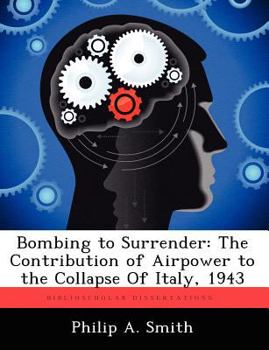Bombing to Surrender: The Contribution of Airpower to the Collapse of Italy, 1943
Throughout this first century of airpower, military theorists have proposed numerous schemes as the best use of airpower. Airmen of many nations tried and tested these theories in wars large and small, and they have learned, ignored, or forgotten many lessons. Of the four major coercive mechanisms available to airpower--punishment, risk, military denial, and decapitation--Robert Pape in Bombing to Win: Air Power and Coercion in War concludes that military denial is the best use of airpower. Furthermore, Pape argues that recent technological advances only enhance the military denial mechanism. In his appendix, Pape categorizes the Italian example as another case of successful military denial. This study examines the collapse of Italy in 1943 and the contribution of airpower to this collapse. Several broad works, often citing Ernest R. May in "Lessons" of the Past: The Use and Misuse of History in American Foreign Policy, claim that airpower decisively caused the Italian surrender, but do not indisputably argue this point nor do they define the coercive mechanism(s) airpower employed to achieve this result. Studies such as the United States Strategic Bombing Survey or that of the British Bombing Survey Unit largely ignore Italy or in the case of Franklin William Deakin's The Brutal Friendship cite coalition politics as the primary cause of Italy's surrender. This study reveals how airpower made four contributions to the collapse of Italy. First, airpower shaped the grand strategy of the western Allied powers in 1943. The Americans preferred to wage an air campaign to destroy German industry while using the direct approach of a cross-channel invasion to defeat Germany.
This work has been selected by scholars as being culturally important, and is part of the knowledge base of civilization as we know it. This work was reproduced from the original artifact, and remains as true to the original work as possible. Therefore, you will see the original copyright references, library stamps (as most of these works have been housed in our most important libraries around the world), and other notations in the work.
This work is in the public domain in the United States of America, and possibly other nations. Within the United States, you may freely copy and distribute this work, as no entity (individual or corporate) has a copyright on the body of the work.
As a reproduction of a historical artifact, this work may contain missing or blurred pages, poor pictures, errant marks, etc. Scholars believe, and we concur, that this work is important enough to be preserved, reproduced, and made generally available to the public. We appreciate your support of the preservation process, and thank you for being an important part of keeping this knowledge alive and relevant.





